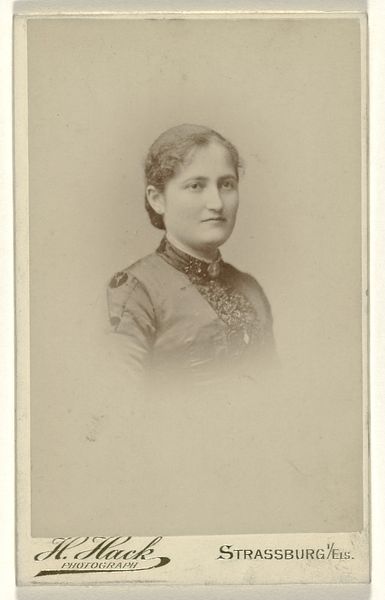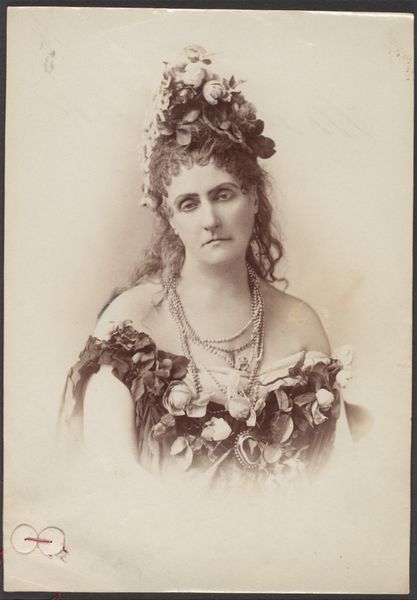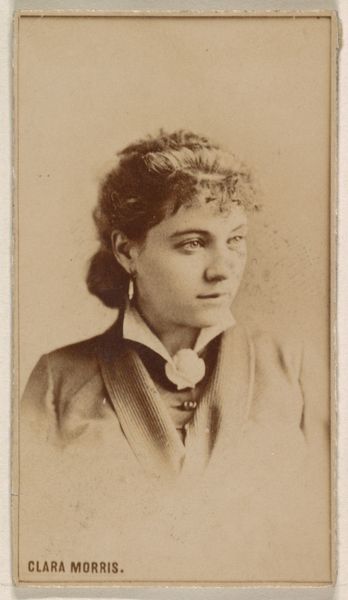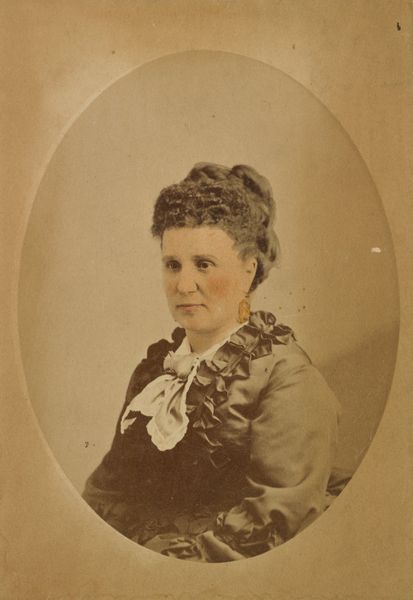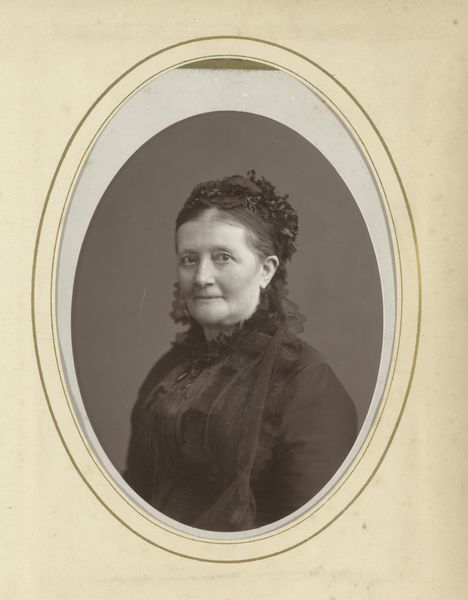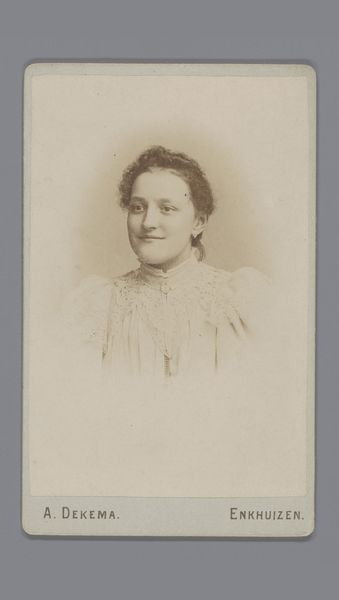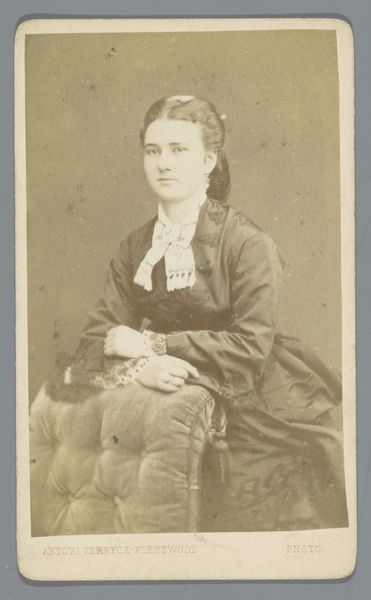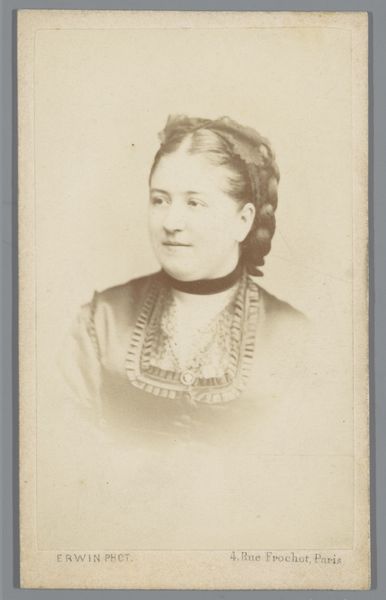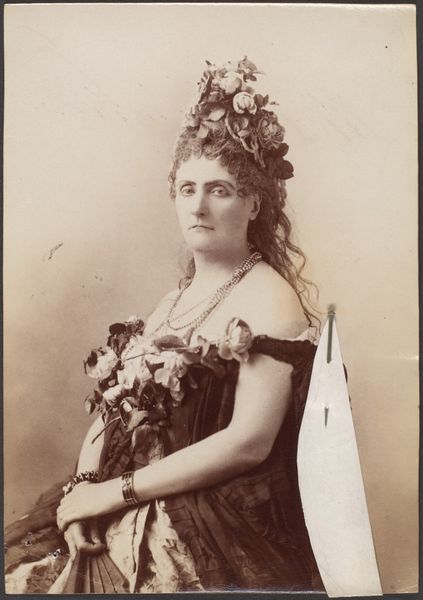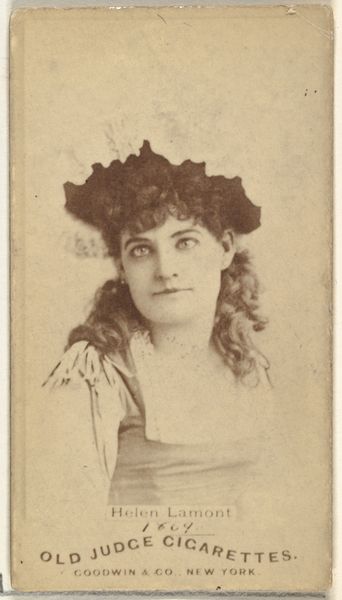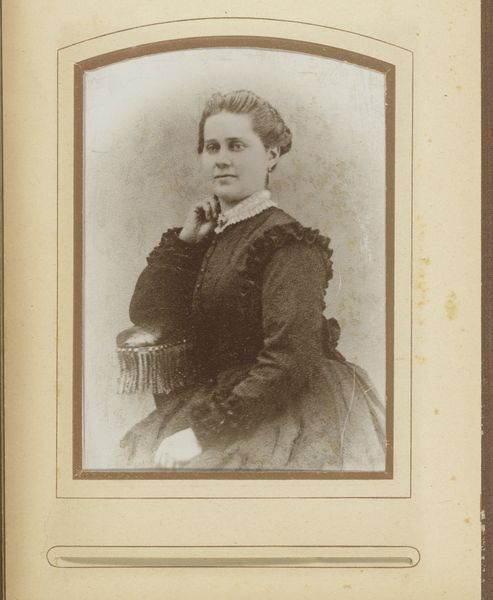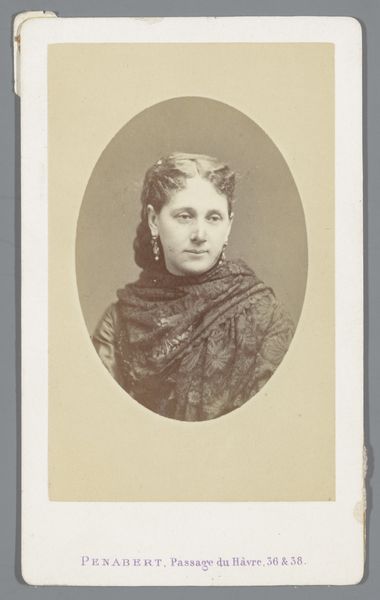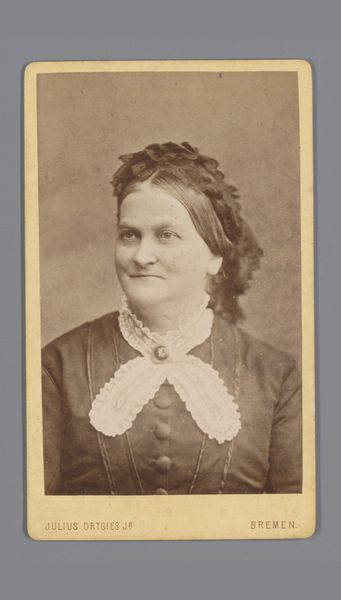
photography, albumen-print
#
portrait
#
photography
#
symbolism
#
albumen-print
Dimensions: Image: 14.3 x 9.8 cm (5 5/8 x 3 7/8 in.)
Copyright: Public Domain
Curator: Here we have "Ti-fille Brune," an albumen print made around 1895 by Pierre-Louis Pierson, a fascinating figure known for his portrait photography. What are your first thoughts looking at it? Editor: It’s rather striking, isn't it? The woman's gaze is so direct and intense. The monochromatic tones lend a solemn, almost melancholic air to the image. And that lace! The contrast between the delicate fabric and her stoic expression intrigues me. Curator: The social context is everything, really. Pierson worked closely with the Countess de Castiglione, a celebrated beauty known for manipulating her image and constructing herself through photography. Her fame was used for social and political power, mostly used as an Italian ambassador during the unification. Editor: Yes, and thinking about Castiglione's obsession with constructing an image, I see layers of symbolism here. The lace itself, what might it signify in the portrait? A signifier of mourning or status, of being "veiled," either literally or figuratively. Perhaps also connected with private and family matters. Curator: Absolutely, it’s crucial to consider the subject and her social standing in that period. But thinking beyond the immediate sitter, what does it suggest about Pierson's view of femininity and beauty ideals in 19th century Europe, within that particular socio-economic elite? How do gender and power operate here? Editor: Intriguing point. I'd argue, perhaps, that he’s playing with the idea of hidden depths. Look at how her eyes are so prominently displayed. The rest of the details remain partially hidden behind a net of shadow and lace. It draws you into deciphering what remains unseen, evoking cultural expectations around female mystery and mystique. Curator: That pushes back on a traditionally objectified vision. This photographic choice has wider social connotations because it was at a turning point. On one hand, it reflected the rigid social hierarchies of the time, the sitter's privilege, but also challenged conventions through the subject's active participation in the photographic process itself. It highlights the evolving role of women in society at this pivotal moment. Editor: Right, seeing it as more of a dialogue than a mere passive observation. Makes you wonder about her untold stories, doesn't it? What does remain veiled, hidden for a cultural memory that will be never available to us. Curator: Precisely, and that is where art helps reflect upon cultural assumptions. Editor: It all adds another dimension. A haunting image.
Comments
No comments
Be the first to comment and join the conversation on the ultimate creative platform.
